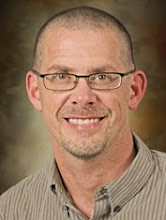 March 7, 2010 from Eric
March 7, 2010 from EricJust wanted to update folks on my recent trip to the mountains. In order to investigate some more opportunities for students to work/study in Peru, this past week I (along with a Peruvian colleague) traveled to the region of Puno in southern Peru. The actual city of Puno is next to Lake Titicaca, the highest navigable freshwater lake in the world (and apparently the largest lake by volume in South America) and sits at about 12,500 ft in elevation.
We arrived there late in the day but were still able to see the lake and the harbor-area at Puno. There are lots of boats with folks willing to take you on a tour of the lake or to see some of the Uros, the interesting floating reed islands (and the folks who live on them). It was too late in the day for us to visit any islands, but we were able to tour around Puno a bit and to see the beautiful cathedral on the central square. (Nearly all towns or cities in South America have a central plaza (square) that is organized in a similar way with a cathedral on one side, the municipal building on the opposite side, a central statue or monument -- usually of a military hero -- and with other official buildings on the other two sides.)


I spent most of my time in a small city called Ayaviri, about 100 kilometers from Juliaca (which is about 45 km from Puno). For those who have been in this region, Ayaviri is about 250 km or so from Cuzco. I was there to visit a group called Caritas-Ayaviri, an organization that works with many of the communities in this very large region. They work on community development projects such as providing potable water for people, education, and public health. There are certain parasitic infections that are big problems in this area, ones that I might be able to have students learn about (and help to address).

One of the highlights for me was visiting one of the communities where they work on a potable water project. We had to drive for a few hours to get there, finally switching from our car to a 4x4 truck to get to our final destination. Communities, and homes that are a part of them, are VERY spread out and isolated. I was able to meet a few of the folks from the community; we were privileged to be invited into their homes to hear them talk with pride about how things like the clean water, hand-washing and new stoves with chimneys that vent outside instead of filling their homes with smoke (and causing all sorts of respiratory problems) have greatly improved their health and lives. It was a great experience.
One experience that cut me to the heart was interacting with an adorable little guy who was being carried around by one of the ladies all day. I assumed this kid was hers, but when we asked his name she said "I don't know" which I thought strange given that she had been caring for the little guy all day. One of the men in their community had been struck and killed by lightning only two days before; as it turned out, that man was the father of this little boy. No one said anything about his mother, so it's difficult to know what will happen. It's a blessing that there are folks there who can care for him for now. I don't know how the community handles such things.



No comments:
Post a Comment